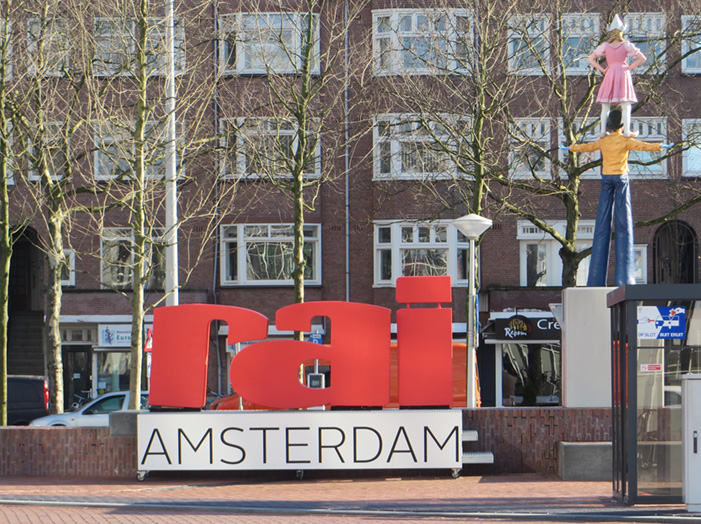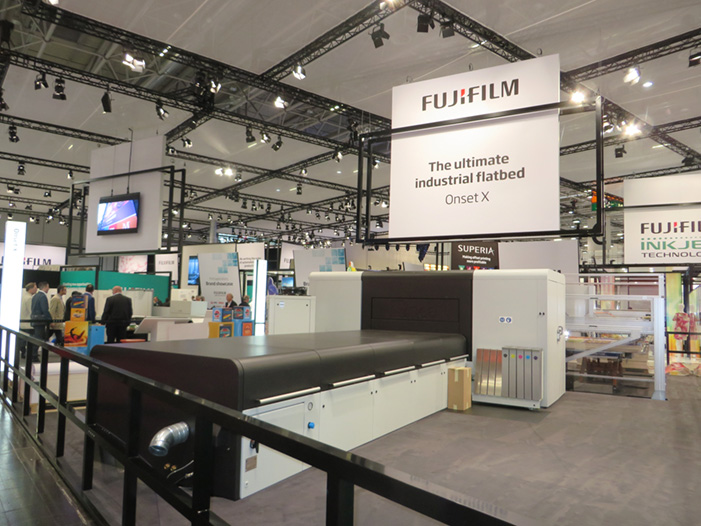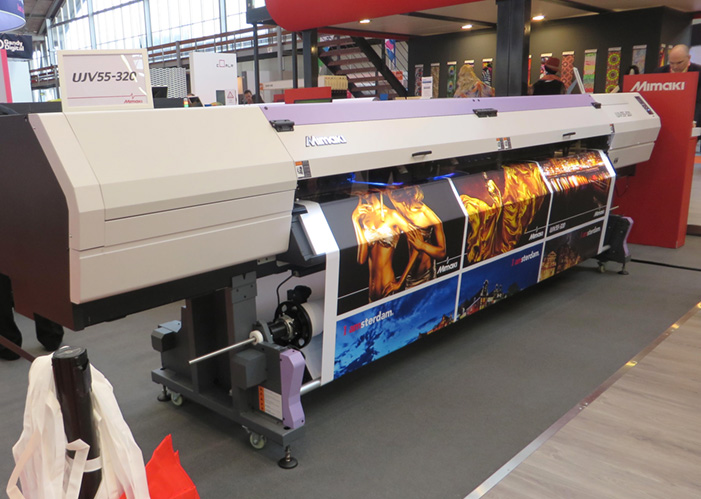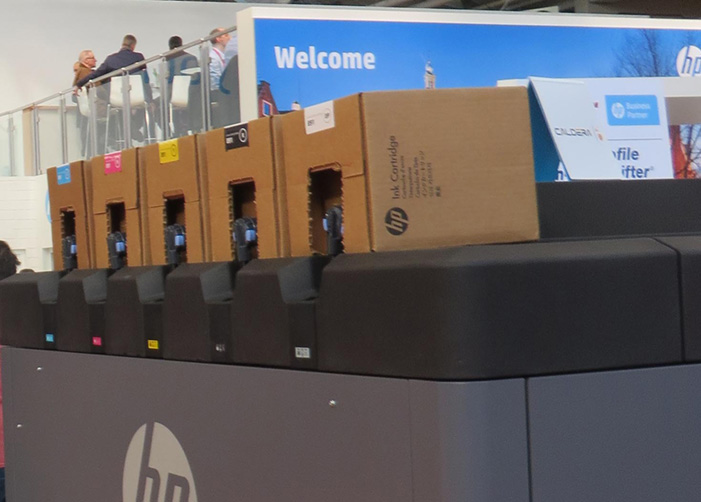Wild Format #2.18: Machine Head
Investing in the right wide format equipment is paramount for any digital print provider. With options more diversified than ever, just how do you find out which machine will really rock your shop?
Buying a new printer is often a kind of life-and-death situation for any print service provider. Depending on the size of the investment, wrong equipment choices might do serious damage to your revenue. With the markets both for applications and equipment moving faster than ever, printing houses have to face this investment ordeal every few years.
But there is good news: With the digital printing industry becoming more mature, well-established manufacturers like Agfa Graphics, EFI, Fujifilm, HP or Mimaki all offer reliable, high-quality products.
Bad news: this does not necessarily apply to some start-ups or very small manufacturers and/or their vendors, and is also not always true for Beta testing machines, regardless of the supplier. So, it is fairly safe to say, if you buy a machine from a recognized manufacturer or dealer that has already been tried and tested by businesses similar to yours, you should be good. End of story? Not quite. Because even the most reputable printing equipment might later prove to be just not suitable for your business. So you have no choice than to …
Do Your Homework
Machine choices for wide format applications span a very wide range of investment volumes, literally from a few hundred dollars or Euros or equivalent, right into the more-than-a-million class. As a rule of thumb, there is a good ratio between latest technology, build quality, productivity, and cost of equipment.
While there are many printer manufacturers, key component suppliers are not quite so plentiful. Usually, printers within the same quality and productivity range share the same class of printheads. Except for HP, which uses its own Thermal Inkjet technology in their Latex, Designjet and PageWide XL printers, all wide format production printers rely on Piezo technology from manufacturers such as Fujifilm Dimatix. Still, differences in print quality and productivity might occur even between machines with the same heads, as drive electronics, ink gamut, software and roll/rigid feed are an important part of the mix. So, never rely on data sheets alone when you make your investment choice, but do ask for a specific print sample on your favourite substrate. If possible, watch your data being printed and calculate the printer´s productivity for your main applications. Because workflow matters, some manufacturers state printhead productivity, but not the actual machine speed per hour, which will be lower, depending on roll-to-roll or flatbed feed or substrate changeover times.
Calculate All The Costs
When it comes to wide format printing, there are three main machine types: flatbed, roll-to-roll and Hybrid or Kombi, which means a printer that can print on both flexible roll and rigid board/sheet materials. There is also a sub-type of roll-fed machines with a contour cutting option included. “Print And Cut” machines, like the Mimaki CJV family, offer cost-effective solutions to produce popular applications such as stickers by the roll with just one machine. Some flatbed machines can be equipped with a roll-to-roll option even after purchase. Changeover between printing flexible and rigid materials with any kind of Hybrid machine may take up to half an hour, so if you need to do this frequently, two separate machines might be a better choice. A flatbed only printer is often able to print on thicker materials, sometimes up to 100 mm, which may be important for you, if you plan special applications like personalized gifts or interior design.
Trade shows are a very good way to learn what print equipment is available on the market. Photo: Sonja Angerer
Very high-productivity printers like an HP Scitex 11000 are beasts, when it comes to weight and size, probably requiring quite substantial alterations in the production area, including floor reinforcement, power supply, air purification and climatisation. They are meant to run 24/7 (or nearly so), some of them with an output up to 1,000 sqm per hour! If you have neither the production nor finishing department staff or local licences to do so, let alone a sales crew able to market this kind of productivity increase, your shop might just not be ready for such an investment. Calculating your capacity demands, never stop short just at the printing press: often new buyers find out very quickly that they should have also invested in a digital cutting table alongside, such as an Esko Kongsberg.
The Inca Onset, available from Fujifilm, is a very good example of a UV flatbed Printer. Photo: Sonja Angerer
With any printer, big or small, never underestimate the total cost of ownership: service contract fees, but also wattage demands may vary greatly. There is still no widely accepted way to calculate a wide format printer´s electrical power consumption, however ISO 21632 (Guidelines to determine the energy consumption of digital printing devices including transitional and related modes) is under development. ISO 21632 is expected to provide a standard way to calculate and so compare the energy usage of wide format digital printers.
Which Printer?
While industrial strength roll-to-roll, flatbed or hybrid presses may print onto virtually any flat surface with UV-curing inks, there is a growing number of models with Latex inks and even some, targeting mainly corrugated markets, using aqueous inks. UV-curing ink just a few years back was limited to high-end machinery with print width typically ranging from some 2.50 to 5 metres. Lately some manufacturers also offer very affordable UV-curing ink options, like the Mimaki UJV55-320, a 3.20 m roll-to-roll printer capable of printing up to 110 sqm/h.
Mimaki introduced the UJV55-320 roll-to-roll UV flatbed printer in spring 2016, with a list price (before taxes) of less than €68,000. Photo: Sonja Angerer
When it comes to smaller print media sizes and lower productivity levels, Latex, Eco-Solvent water-based inks are more common. While water-based inks are widely used for indoor applications, Latex and Eco-solvent inks are suitable for outdoor applications, lasting for up to three years. For high-quality results, all water-based, and most Eco-Solvent and Latex inks need certified and/or coated media to print onto, which are more expensive than uncoated substrates. By the litre, inks for entry level machines regardless the ink technology, also tend to be more costly than supplies for high productivity presses.
If your main focus is textile printing, you might be in for just another wild ride: Regardless of printing width, there is a wide variety of options available for soft signage, apparel and roll-to-roll textile printing. Depending on fibre and application, substrate feeding, pre- and post-treatment will vary greatly, so always make sure to contact a specialized consultant or vendor early in the investment process.
HP use their own thermal printheads with their Latex ink printers. Photo: Sonja Angerer
After-Sale is Pre-Sale
Of course, any investor worth his or her management certificate, has not only considered the numbers, but also looked into potential markets way before entering the product decision stage. To obtain a good overview, trade magazines or websites, trade shows and even visits to demo rooms or Beta installations are a viable first step. Don´t stop there, though: try and talk to your peers, learn about their experiences with any brand or vendor, not just pre-, but also after sales. Never forget to apply some common sense, though: It is just unrealistic to believe, that a very cost-effective wide format printing machine will offer the same level of technical excellence, application versatility and long-term productivity as a high-end model.
Sonja Angerer
The Wild Format guides are intended to expand awareness and understanding of the craziness that can be created on wide format digital printing devices, from floors to lampshades and everything in between.
These guides are made possible by a group of manufacturers working together with Digital Dots.
This article is supported by Efi (www.efi.com), Esko (www.esko.com) and HP (www.hp.com).
Together we hope you enjoy the articles and that you put into practise what you learn. If you want to talk about it, go to our LinkedIn group via this link.
Enjoy and Go Wild!
De trainingen voor 2022 staan gereed. Kijk voor het volledige online aanbod van bestaande- en nieuwe trainingen op de website.
BLOKBOEK.COM EN PRINTMEDIANIEUWS: HET OPTIMALE DOELGROEP BEREIK






















